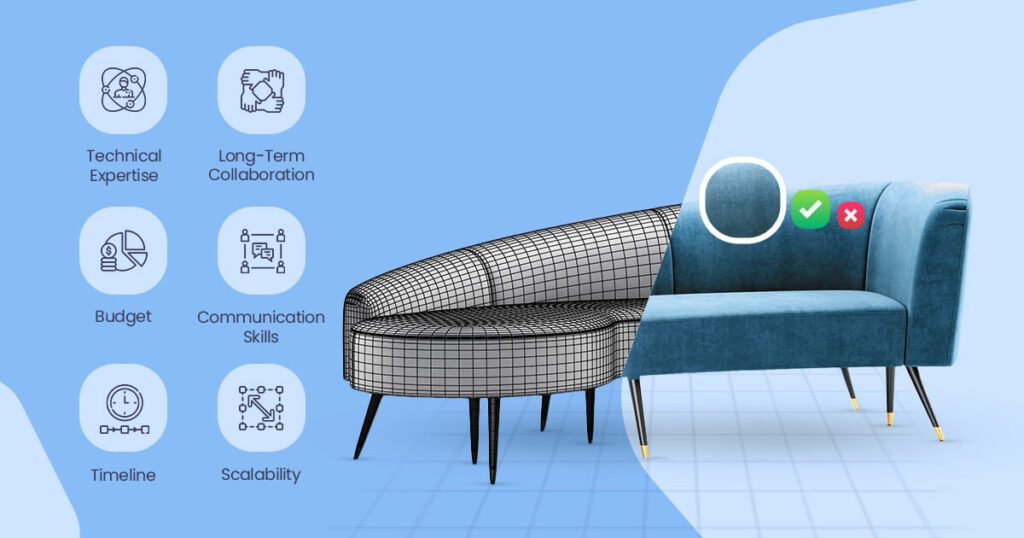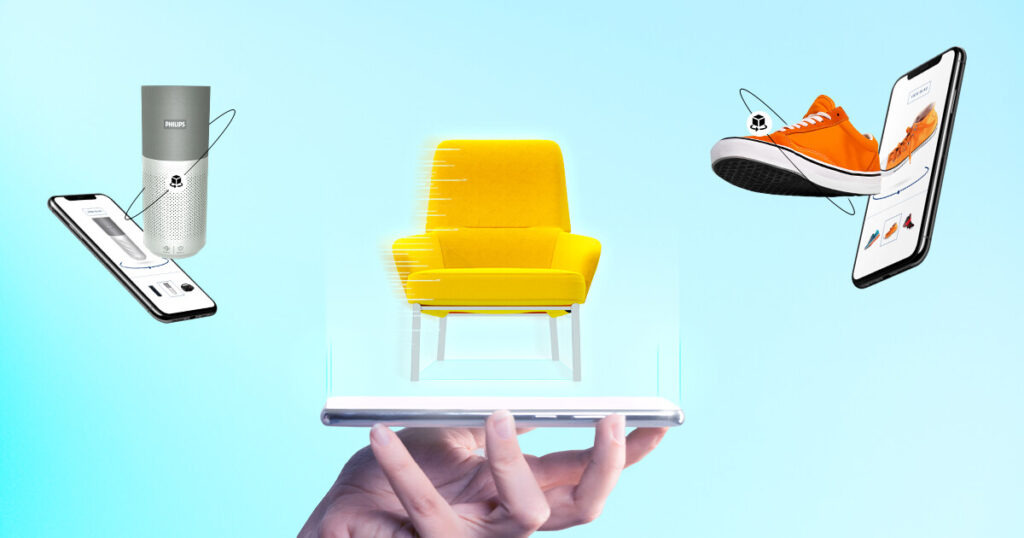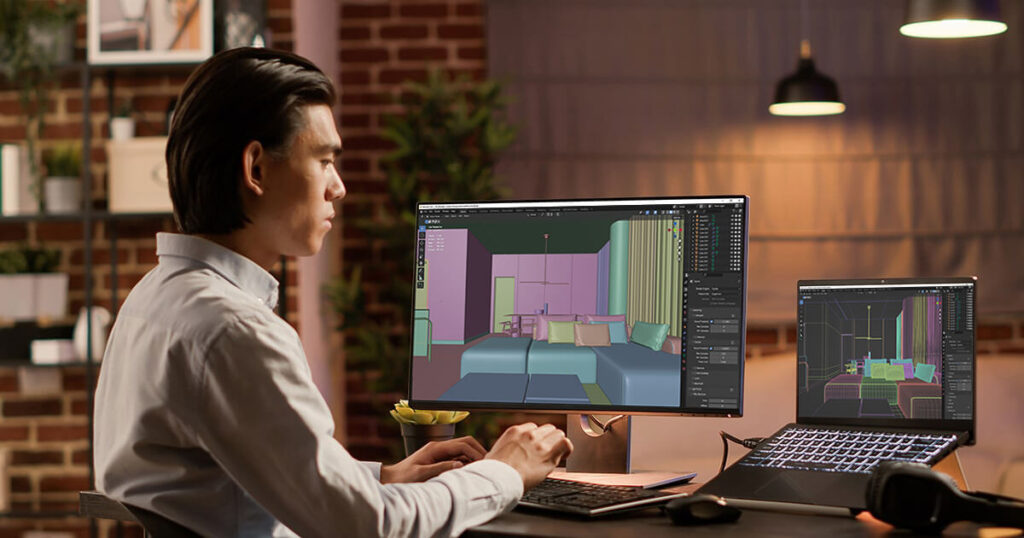A hero shot is a powerful image that represents an item in the best possible way. It is used frequently in visual media because it attracts eyes most. In furniture marketing, this shot is considered an “entry model,” which means that it can be seen by any prospective buyer for the very first time, regardless of whether it comes from an advertising, social media, or website. It’s like the heart of the product itself and its worth conveyed through such photos.
What makes hero photos so important then? Customers in today’s competitive market make instant decisions hinging on aesthetic appeal; hence, within seconds one needs something attractive. A thrilling hero image can attract attention, help define a brand, and above all, increase sales. These kinds of shots help furniture companies emphasize the elements that set their products apart, including special details, textures, and workmanship.
The production of hero shots has changed dramatically with the advent of 3D modelling services. Traditional photography was the only option available to brands, but that is no longer the case. With 3D modeling, furniture brands can produce ultra-realistic images that bring their products to life in an unprecedented manner. Let’s take an investigation into 3D visualization and its effects on improved hero shot.

The Role of 3D Modeling in Creating Hero Shots
Explanation of 3D modeling techniques
Creating furniture in a digital way by using sophisticated software’s such as 3Ds Max or Blender, 3D modeling is carried out. With this, artists are able to build intricate models that imitate textures, materials, and lighting. The representations can then be manipulated into different positions to come up with an ideal hero shot that best captures its important attributes from the right angle.
Benefits of using 3D models for hero shots
With 3D models, brands can get hero shot of their products with remarkable accuracy. From elaborate textures to realistic lighting, each feature of the furniture is adjustable. Moreover, companies can use products that are not accessible at this point but provide an accurate brand image each time.
Comparison of traditional photography versus 3D modeling
In a straightforward way, real-world elements such as light and space limit the ability of conventional photography. However, in this regard, the 3D model affords one total control. A 3D hero picture doesn’t have any blemishes; therefore, it opens a world of unlimited artistic freedom. The difference between this method and photography is that while traditional photography has to go back to taking the same shot again or moving things around physically, on the contrary, a three-dimensional image depends on computer programs for its appearance all through, which are always affordable and of high quality jobs as it were.

Key Elements of a Stunning Hero Shot
Composition and framing considerations
The major factor on which a good hero shot depends is composition. The furniture should be the center of focus, and all other visual elements should look towards it. Framing correctly will show some of its best sides, thus telling more about the product in terms of design and utility. The use of negative spaces as well as equal proportions makes it attractive to the eyes.
Lighting techniques to enhance visual appeal
The ambiance you create, as well as the finest details of your furniture, depend on how well you light your room. An indoor shot done with 3D graphics can have its lights adjusted to imitate sunlight or a theatrical room. Soft shadows, highlights, and shiny surfaces create an illusion of life in the product, which makes it feel realistic and engaging.
Textures and materials that add realism
The authenticity in a hero shot is achieved based on textures and materials. Since 3D modeling is able to represent really accurately from a wooden grain structure up to soft fabrics, therefore, one might say that it demands an eye for detail. It makes sense then that good textures evoke tactile sensations, which makes one feel like touching various scenes presented on furniture, thereby increasing its demand.
Case Studies: Successful Hero Shots Created with 3D Modeling
Examples from various industries (e.g., product design, architecture)
The use of 3D modeling in all industries for creating strong superhero shots is invaluable. For instance, in product design firms employ 3D renders to display their gadgets before they are manufactured. In architecture, firms produce realistic visualizations that make buildings appealing to clients. In the furniture industry, 3D hero shots are used to emphasize designs within various environments ranging from stylish contemporary settings to warm old-fashioned houses.
Examination of the methods employed in these instances
3D modeling techniques that are mostly used in these fields can be highlighted. To create mood lighting simulations are used while high-grade textures are selected to make sure that materials such as polished metals or soft fabrics look real. Framing and composition of each hero shot is done with precision so as to bring out the important aspects of the product.
Impact of these hero shots on audience engagement and perception
Hero images made using 3D modeling really increase audience engagement. They give users a more lifelike and elaborate view of the product; this builds confidence as well as the thrill. Many times, 3D hero shots improve conversion rates and brand image since buyers are likely to relate to attractive images that have an artistic quality.
Conclusion
Hero shot are an indispensable part of visual storytelling, and they serve as focal points that lure prospective clients while at the same time conveying the uniqueness of products. In marketing, this feature can either make or break a first impression and plays a significant role in creating a brand identity and also influencing purchasing decisions.
3D modeling takes hero shots to another level by allowing for unmatched creative control, accuracy, and flexibility. While 3D renders enable you to exhibit textures, alter lighting, or come up with compositions, traditional photography does not have anything close to them. For furniture companies, this means perfect images that connect with customers on an emotional level.
3D modeling has to be utilized for hero shots by businesses that want to make some noise about themselves if they desire to be significant. Using lifelike visuals on marketing materials can tell so much more than words do, thus driving customers in and increasing sales figures tremendously. For that reason, this is an era when brands need to embrace 3D in their presentations of products as it transforms them altogether.
FAQ:
How can animation benefit from 3D modelling?
3D modeling has contributed to animation in a very positive way because it helps to achieve realistic, detailed, and versatile visuals. This means they are capable of creating real-like characters, environments, and objects that can be monitored from all sides. Hence, it results in dynamic motions, smooth transitions, and complex textures, which enhance the whole animation quality. Moreover, 3D modeling helps make changes quickly and also allows assets to be used multiple times in different projects, thus making the animation process less time-consuming and cheap.
How does one create a compelling hero image?
A good hero image is well defined and should be made of sharp and resonant visuals for immediate attention-seeking. The imagery should be relevant to your brand or product and be of high quality, with a neat layout that does not crowd the subject matter. The colors used must be bright, inviting, and eye-catching, while careful attention should be paid to the lighting of the item in focus so as to maintain its visibility. One should think of including short, straightforward sentences and phrases as part of minimal but potent text that provides explanation or calls-to-action in relation to the image being displayed above it. For greater impact, keep it symmetrical as well as ensure this same hero image conforms to your overarching brand identity.
Why are hero photos rendered in 3D so important for furniture presentations on the internet?
In order to allow potential customers to see a product in a realistic way, 3D rendered hero shot are important for online furniture presentations as they present the products in a very detailed and realistic manner. These images are better than usual photographs and help maintain an attractive look of furniture as well as engage more effectively because they can convey quality and features well than the traditional photos do. And also, 3D rendering involves customizing and making beautiful glossy images, which helps increase online visibility for brands with the ultimate goal of increasing sales.
What are the essential components of an effective e-commerce 3D-rendered hero shot?
- Good Rendering: Images that are sharp as well as detailed with real textures and lights.
- Flawless Illumination: To bring out the features of a product well—light it up.
- Enthralling Composition: An angle which appeals visually to exhibit the construction of the merchandise.
- Uniformity in Branding: Merging brand colors or elements for harmonious display.
- Conspicuous Centrality: The object itself is on view whilst all other things fade away.





